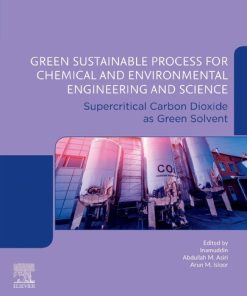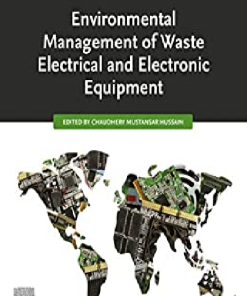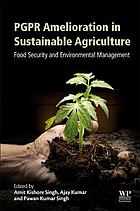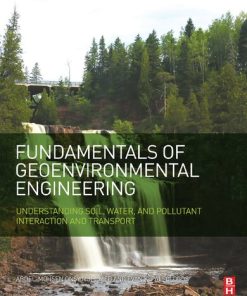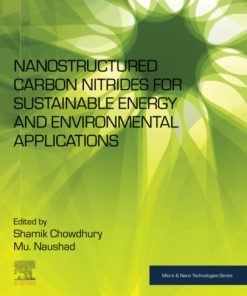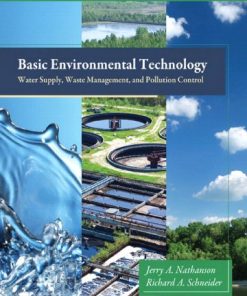Sustainable Utilization of Carbon Dioxide in Waste Management Moving toward reducing environmental impact 1st edition by Abdel Mohsen Mohamed 0128236062 9780128236062
$50.00 Original price was: $50.00.$25.00Current price is: $25.00.
Sustainable Utilization of Carbon Dioxide in Waste Management: Moving toward reducing environmental impact 1st edition by Abdel-Mohsen O. Mohamed – Ebook PDF Instant Download/DeliveryISBN:
Full download Sustainable Utilization of Carbon Dioxide in Waste Management: Moving toward reducing environmental impact 1st edition after payment.
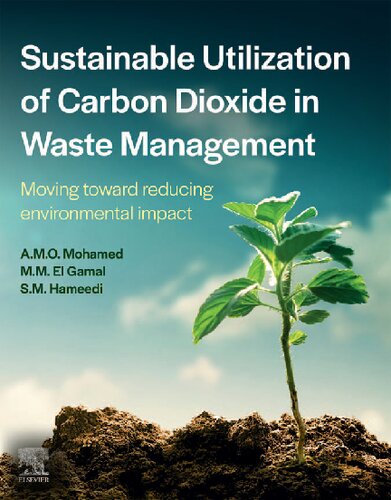
Product details:
ISBN-10 : 0128236062
ISBN-13 : 9780128236062
Author: Abdel-Mohsen O. Mohamed
Sustainable Utilization of Carbon Dioxide in Waste Management addresses all aspects of sustainable use of carbon dioxide in waste management processes and provides best practices and process improvements for carbon sequestration in the management of a variety of waste types, including carbide lime waste, construction waste, and reject brine effluents, amongst others. The book also provides underlying research on the environmental impacts of these wastes and the need for carbon capture to emphasize the importance and need for improvements of these processes. Overall, this information will be key to determining lifecycle benefits of CO2 for each newly improved waste process.
Sustainable Utilization of Carbon Dioxide in Waste Management: Moving toward reducing environmental impact 1st Table of contents:
Chapter 1. Emerging carbon-based waste management sustainable practices
1.1. Introduction
1.2. Waste management principles and approaches
1.3. Circular economy (CE)
1.4. End-of-waste criteria
1.5. Case study 1: development of EoW criteria for construction and demolition reprocessed waste aggregates
1.6. Case study 2: development of EoW criteria for secondary aggregates from industrial processes
1.7. Case study 3: development of EoW criteria for carbon capture and utilization (CCU) products
1.8. Summary and concluding remarks
Chapter 2. Carbon capture and utilization
2.1. Introduction
2.2. Carbon capture
2.3. Carbon capture cost
2.4. Carbon dioxide transport
2.5. Carbon storage (CS) technologies
2.6. Carbon utilization (CU) technologies
2.7. Global CO2 utilization projects
2.8. Carbon capture and utilization economic evaluation
2.9. Carbon binding capacity in carbon-based products
2.10. Market potential of carbon-based products
2.11. Policies and regulations to support carbon capture, storage, and utilizations
2.12. Summary and concluding remarks
Chapter 3. Assessment of carbon dioxide utilization technologies
3.1. Introduction
3.2. Technical and economic assessment
3.3. Life-cycle assessment
3.4. Summary and concluding remarks
Chapter 4. Carbonation reaction kinetics
4.1. Introduction
4.2. Chemical reactions
4.3. Reaction models
4.4. Unreacted core shrinking model for spherical particles
4.5. Grain model
4.6. Other approaches
4.7. Summary and concluding remarks
Chapter 5. Mineral carbonation
5.1. Introduction
5.2. Carbonation of alkaline materials
5.3. Principles of accelerated carbonation reaction
5.4. Controlling parameters
5.5. Useful carbonated products
5.6. Utilization of carbonated products
5.7. Life cycle assessment (LCA)
5.8. Summary and concluding remarks
Chapter 6. Carbonation technologies
6.1. Introduction
6.2. Technology readiness
6.3. Direct gas-solid carbonation
6.4. Single step aqueous processes
6.5. Multistep aqueous processes
6.6. Case studies for the use of the MGF process: I. cement kiln dust (CKD)
6.7. Case studies for the use of MGF process: II. steel slag
6.8. Case studies for the use of MGF processes: III. production of sewerage pipes
6.9. Case studies for the use of MGF process: IV. technology demonstration in underground sewerage environment
6.10. Case studies for the use of MGF process: V. technology demonstration in saline and variable acidic environments
6.11. Summary and concluding remarks
Chapter 7. Laboratory carbonation methods: testing and evaluation
7.1. Introduction
7.2. Experimental methods
7.3. CO2 experimental uptake
7.4. Carbonation efficiency and ratio
7.5. Summary and concluding remarks
Chapter 8. Carbonation of fly ash
8.1. Introduction
8.2. Classification of fly ash
8.3. Sources of fly ash
8.4. Fly ash utilizations
8.5. Environmental risks
8.6. Carbonation methods
8.7. Chemical reactions of CO2 sequestration by fly ash
8.8. Thermodynamic simulations of phase equilibria
8.9. Treatment methods
8.10. Summary and concluding remarks
Chapter 9. Carbonation of steel slag
9.1. Introduction
9.2. Sources and characteristics of slags
9.3. Steel and iron slags utilizations
9.4. Environmental impact
9.5. Hydration/pretreatment
9.6. Carbonation
9.7. CO2 sequestration
9.8. Treatment methods
9.9. Summary and concluding remarks
Chapter 10. Carbonation of calcium carbide residue
10.1. Introduction
10.2. Calcium carbide manufacturing
10.3. Sources of calcium carbide residue
10.4. Utilization of calcium carbide residue
10.5. CCR disposal practice
10.6. Precipitated calcium carbonate
10.7. Treatment processes
10.8. Summary and concluding remarks
Chapter 11. Carbonation of cement-based construction waste
11.1. Introduction
11.2. Concrete waste
11.3. Waste concrete recycling
11.4. Cement types, composition, and hydration
11.5. Carbonation mechanisms
11.6. Carbonation of cementitious products
11.7. Carbonation of concrete cement waste
11.8. Supercritical CO2 carbonation of cement concrete waste
11.9. Pozzolanic reactivity of carbonated concrete cement fines waste
11.10. Industrial concrete waste recycling
11.11. Summary and concluding remarks
Chapter 12. Carbonation of mine tailings waste
12.1. Introduction
12.2. Mine tailings waste residues
12.3. Natural carbonation of tailings waste residues
12.4. Mineral carbonation
12.5. Carbonation of anorthosite tailing waste residues
12.6. Carbonation of ultramafic tailing waste residues
12.7. Carbonation of ophiolitic complexes tailing waste residues
12.8. Accelerated carbonation of tailings waste residues
12.9. Red mud
12.10. Utilization of carbonated tailings waste residues
12.11. Summary and concluding remarks
Chapter 13. Carbonation of brine waste
13.1. Introduction
13.2. Desalination capacity
13.3. Brine characteristics
13.4. Environmental issues
13.5. Brine waste management
13.6. Carbonation using solvay process
13.7. Carbonation of high Mg and Ca brine waste
13.8. Carbonation using mixed metal oxides
13.9. Carbonation using alkaline industrial waste
13.10. Carbonation using electrodialysis
13.11. Useful products
13.12. Life cycle and techno-economic assessments
13.13. Summary and concluding remarks
Chapter 14. Carbonation of cement kiln dust
14.1. Introduction
14.2. Sources and characteristics of cement-based dust
14.3. Uses of cement kiln dust
14.4. Treatment of cement kiln dust
14.5. Treatment processes
14.6. Modeling of carbonation kinetics
14.7. Summary and concluding remarks
People also search for Sustainable Utilization of Carbon Dioxide in Waste Management: Moving toward reducing environmental impact 1st:
how much co2 per person is sustainable
what is a sustainable carbon footprint
is carbon capture sustainable
carbon dioxide utilization
carbon utilization examples
Tags: Sustainable Utilization, Carbon Dioxide, Waste Management, environmental impact, Abdel Mohsen Mohamed
You may also like…
Computers - Artificial Intelligence (AI)
Science (General)
Engineering
Biogas Plants: Waste Management, Energy Production and Carbon Footprint Reduction Wojciech Czekala
Earth Sciences - The Environment
Engineering - Environmental
Technique - Nanotechnology




